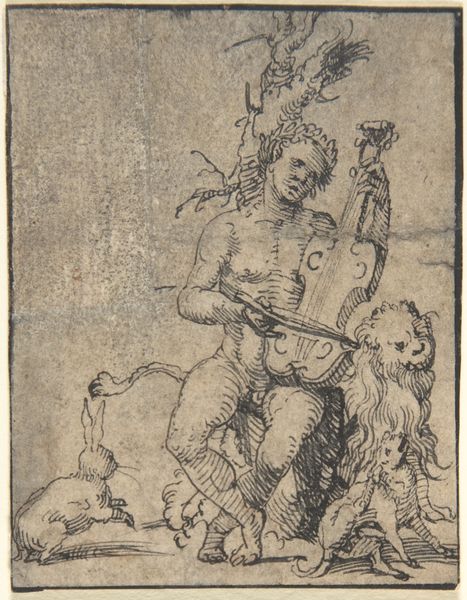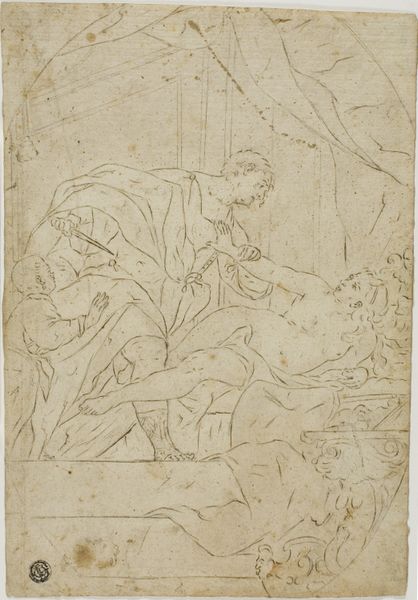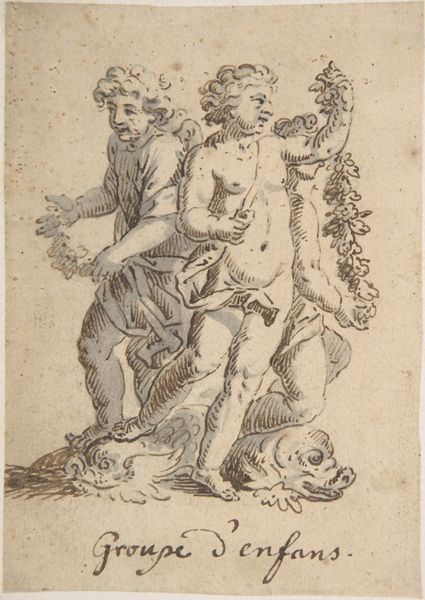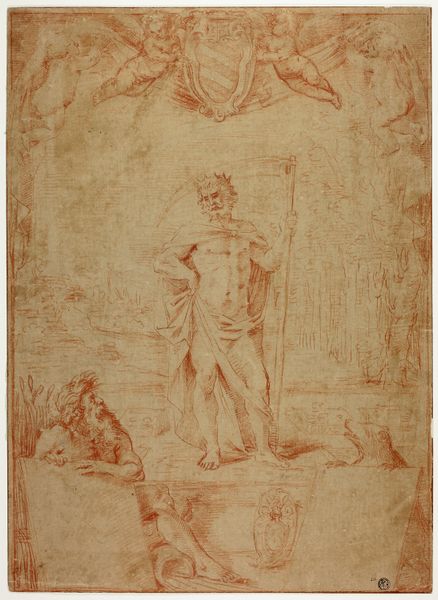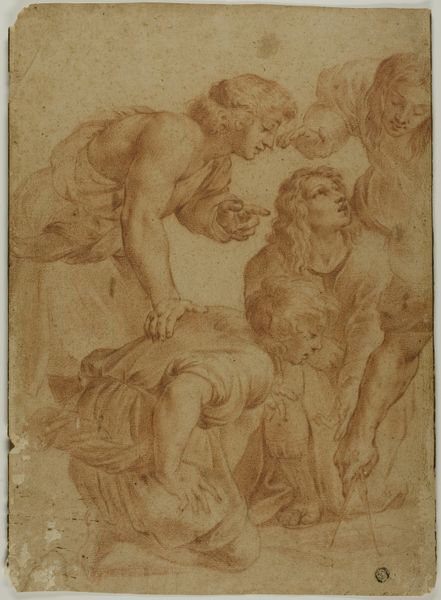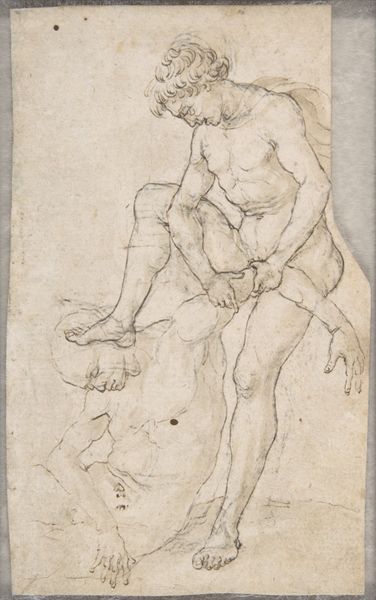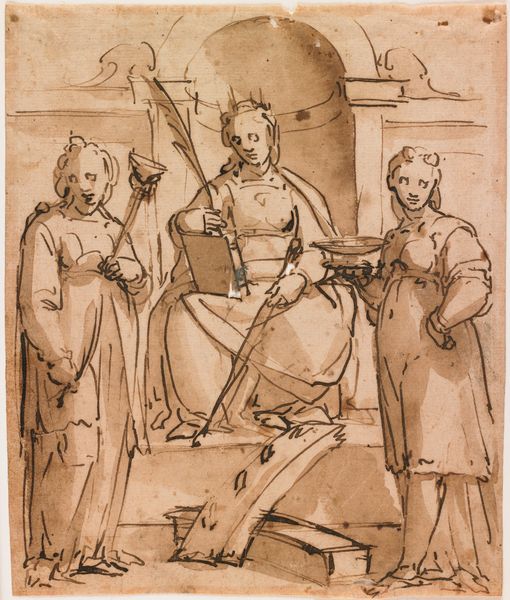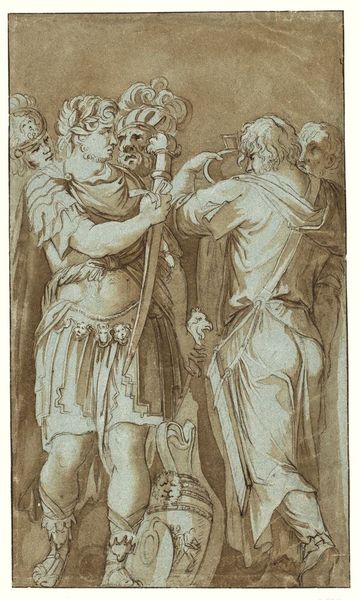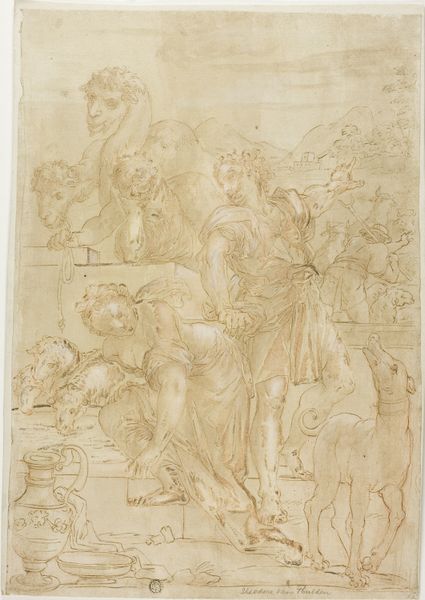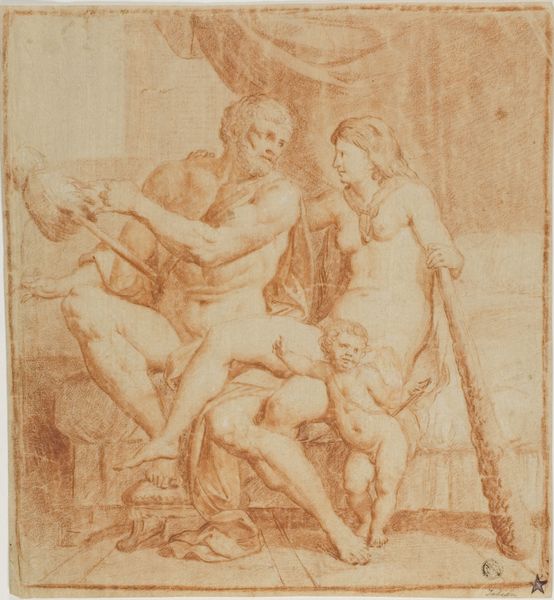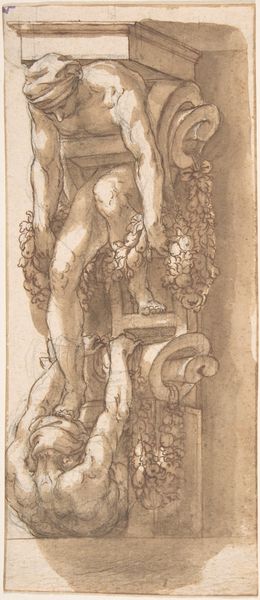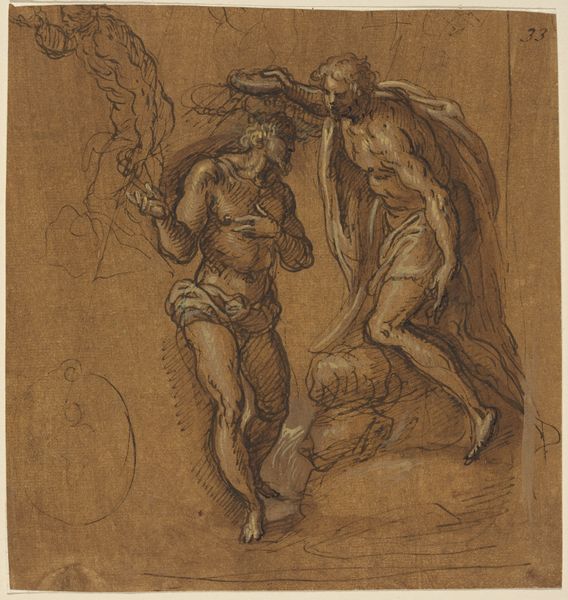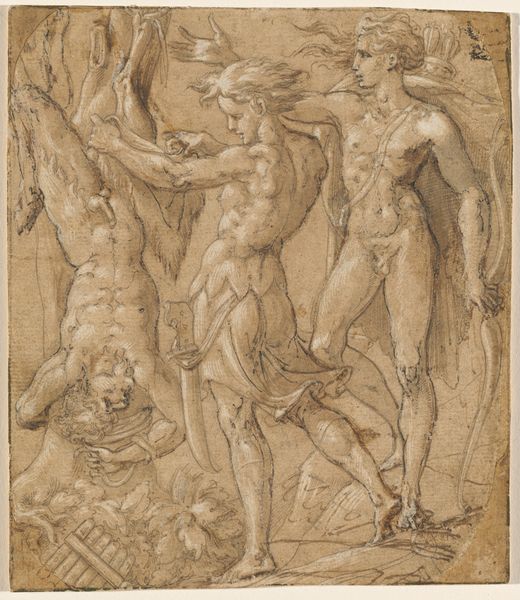
drawing, paper, ink, chalk, pen
#
drawing
#
narrative-art
#
figuration
#
paper
#
11_renaissance
#
ink
#
group-portraits
#
chalk
#
pen
Dimensions: 189 × 133 mm
Copyright: Public Domain
Curator: Immediately I'm drawn in by the sense of unease; the heavy lines and the obscured faces really create an anxious mood. Editor: Let's dive into Taddeo Zuccaro's "Standing Soldiers and Kneeling Figures." We see the work realized with pen, chalk, and ink on paper. Although the date remains unknown, its stylistic traits clearly root it in the Renaissance. What narratives or historical resonances do you think are evoked through the artist’s hand? Curator: Considering it more closely, the standing figures strike me as figures of power, armed and towering over those kneeling. Their averted gazes, almost dehumanized by a lack of eye contact, emphasize a disquieting power dynamic reminiscent of hierarchical oppression of the Renaissance. How might we unpack the significance of this moment within broader socio-political struggles of the time? Editor: Certainly, we can analyze the dynamic, but have you noticed how Zuccaro's strategic use of chiaroscuro casts a shadow over the composition, obscuring our reading? The strong verticals provided by the standing figures and architectural structure on the right sharply contrast with the rounded, huddled forms below, guiding the viewer's eye in an orchestrated visual argument. This contrast amplifies that emotional disquiet we noted. Curator: I think your points reveal an interesting lens through which to consider the function of these graphic strategies within the work’s capacity to visualize moments of social injustice, even state-sponsored ones. If these kneeling figures are, say, representative of the disempowered, how does Zuccaro position them within the context of this visual framework? Editor: The linear precision is truly arresting. We might also analyze how Zuccaro’s composition creates an interplay between depth and flatness, challenging Renaissance perspective to emphasize a compressed narrative space, drawing the viewer closer to the unfolding event. That feels essential to interpreting the piece’s psychological tension, too. Curator: In thinking about visual injustice, this feels like an entry point for addressing these urgent sociopolitical concerns, now and across time. What do we gain by recognizing Zuccaro's choices to frame such encounters, or even question what his intention was? Editor: And through rigorous examination of its formal elements, we’ve opened doors to rich discourse concerning art, authority, and human experience. Thank you. Curator: My pleasure, until next time.
Comments
No comments
Be the first to comment and join the conversation on the ultimate creative platform.
